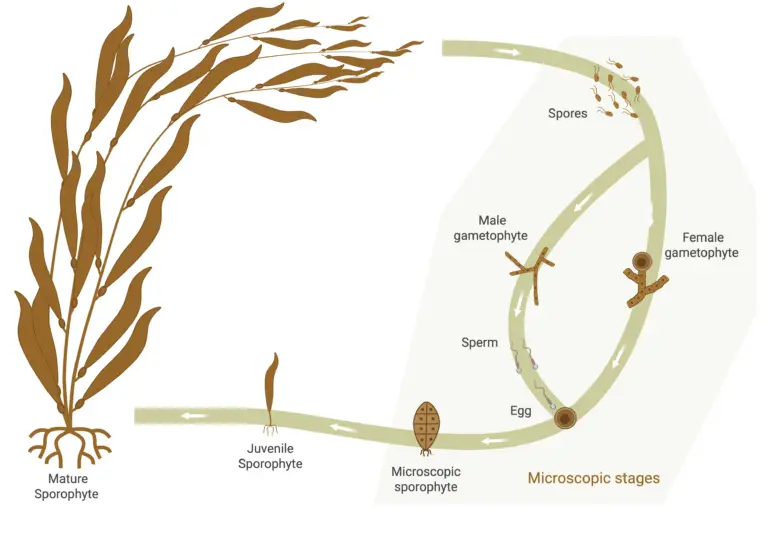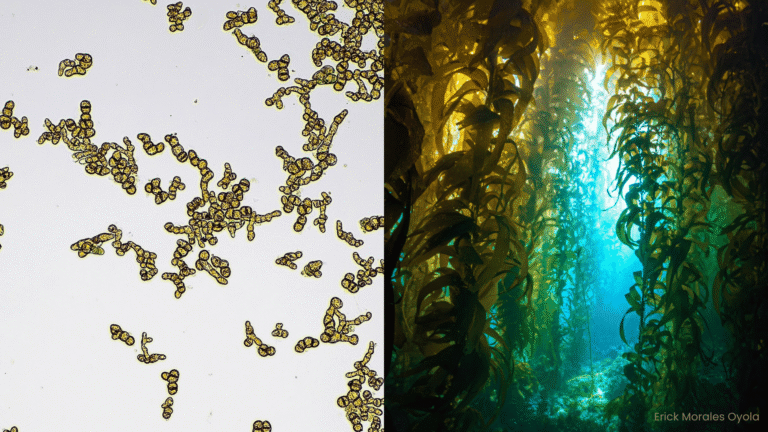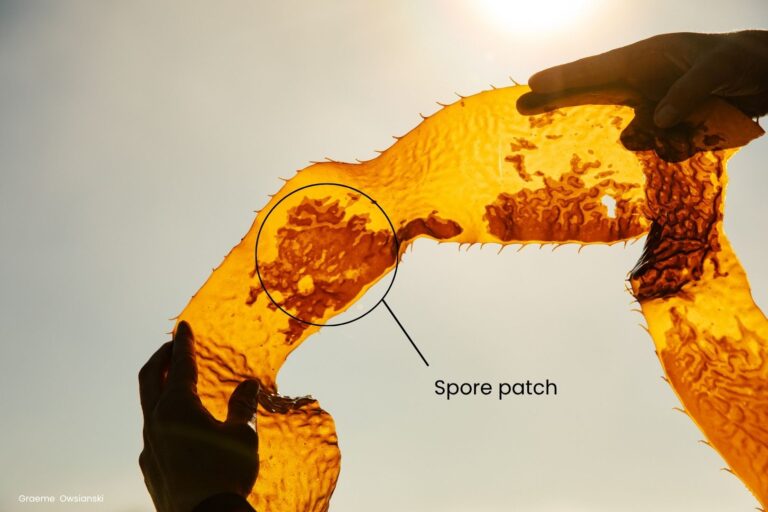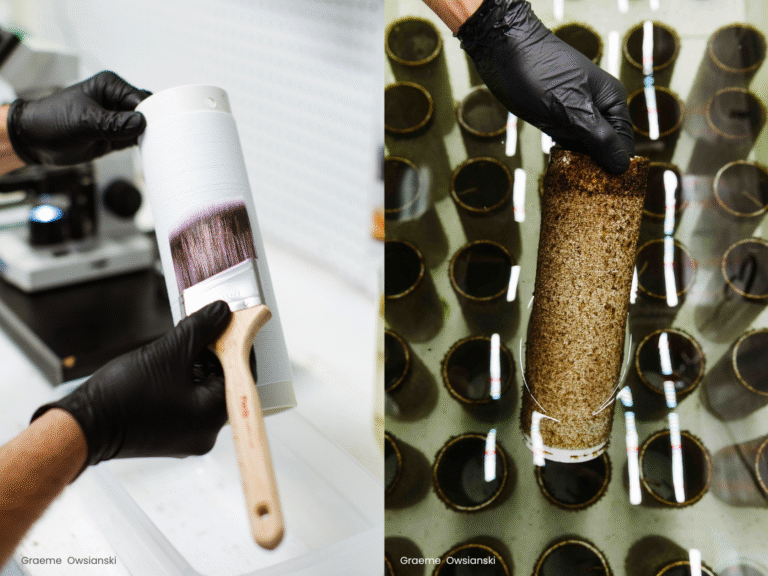What is Kelp seed?
TLDR
Kelp “seed” refers to microscopic kelp life-stages grown in a land-based nursery to begin in-ocean cultivation. Kelps flip between a large leafy stage (sporophyte) and a microscopic stage (gametophyte), and we use knowledge of that biology to produce seed for our partners and their projects. At West Coast Kelp (WCK) we collect spores from local wild kelp, culture them through their various life-stages, and produce kelp “seed” ready for ocean out-planting.
What is "kelp seed"?
The kelps are a group of large, ecologically and economically important seaweeds found in temperate oceans around the world. Unlike land plants, they do not use seeds to reproduce. Instead, they use spores, eggs, and sperm. So what do we mean by “kelp seed” if the kelp life cycle doesn’t include seeds?
Kelp seed refers to microscopic kelp life-stages grown in a nursery to begin in-ocean cultivation. At West Coast Kelp’s nursery, we produce kelp seed for mariculture, restoration, and habitat offsetting projects.
The kelp life cycle in two parts
Understanding how kelp seed is made requires an understanding of the kelp life cycle. Thankfully, the kelps lead a very interesting life. In fact, some might say that they lead a double life.

Sporophyte: the big leafy kelp that releases spores
Kelp reproduction does not follow a straight line. It loops, flips, and doubles back on itself. Like ferns and mosses, the kelps alternate between a big leafy form and a microscopic one. The visible kelp we see in the ocean is the life stage known as a sporophyte. When mature, a single sporophyte releases millions of tiny, swimming spores into the water.
Gametophyte: microscopic threads that carry male or female cells
Settled spores grow into a new, microscopic life-stage, known as a gametophyte. Gametophytes carry male or female cells (i.e, egg and sperm), and when conditions are right they reproduce sexually, forming a new sporophyte.
Flexibility: sexual when conditions are right, asexual when they are not
If the environment is not cooperative, gametophytes can also reproduce asexually, cloning themselves and holding on until things improve. In the nursery, this flexibility helps us time culture steps and maintain healthy seed stock.

How we make kelp seed at WCK
Here’s the workflow we use to prepare seed for ocean out-planting.
1) Source spores from local wild kelp
We collect microscopic spores from local wild kelp and bring them back to our land-based nursery.

2) Culture spores into gametophytes
After collecting wild the kelp spores, we tailor their environment to match the ideal conditions required for growth. After a few days, the swimming spores settle, and they grow into the gametophyte life-stage. By keeping the gametophytes under red light, we prevent them from returning to their large, leafy life-stage (the sporophyte).
By keeping the gametophytes under red light, we maintain control of life-stage transitions. The objective here is steady gametophyte growth we are ready to out-plant the “seed” back in the ocean.
3) Prepare for ocean out-planting
In preparation for ocean out-planting, we apply the gametophytes to spools of twine and expose them to full-spectrum light. This triggers egg and sperm production. Once the eggs are fertilized, they quickly grow into little sporophyte seedlings.

4) Deploy at sea for grow-out
But why are we growing our seed on spools of twine? Twine is used as an efficient transfer mechanism to get the seedlings onto the cultivation lines at ocean grow-out sites. The grow line is moved through the centre of the spool as the seeded twine is wrapped around it.

A mere 4 months later, the seedlings have put on significant biomass and are building complex three-dimensional habitat that supports marine life, including fish like Pacific salmon and herring.
Where this fits in: restoration and nursery work
Seed production is the starting point for in-ocean cultivation that supports restoration projects. The steps above translate biology into a practical workflow: collect, cultivate, deploy, and monitor.
Whether its for research, habitat restoration and offsetting, or crop production, our nursery produces the kelp seed required to grow large, healthy kelp plants.
Get Started
If you’re planning on growing kelp, we can help you get started. Book a call to learn more about our process and see whether we can support you project.
